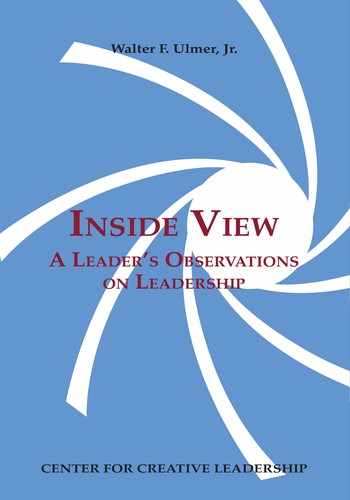Efforts to study leadership have always been plagued with the “criterion” problem: What defines leadership? Neither the business nor the academic community has ever been able to agree on a definition. And even if one were agreed upon today, circumstances and social evolution would probably make it less useful tomorrow.
Without a definition, it is very difficult to measure leadership—to objectively evaluate its success or failure. At the Center, most of our discussions of the success and failure of leaders are based on an organizationally derived definition of “success” and “failure,” and these may or may not be a reflection of actual leadership effectiveness, and may or may not be generalizable outside the organizational cultures from which the data were collected.
The challenge of defining and measuring leadership is inherent in all of the Center’s work. Perhaps in the midst of our concern for developing evaluative criteria regarding leadership—or, more precisely, our concern about criteria for leader effectiveness in a particular situation—we have neglected a potentially valuable tool. This particular tool stems from assessment-center technology.
Assessment centers in American business life have their origins in World War II. In 1942 the Army’s Office of Strategic Services started screening candidates for a variety of wartime intelligence assignments (see Assessment of Men, New York: Holt Rinehart, 1948). A number of subsequent research, selection, and development techniques, such as those at AT&T, were derived from the OSS assessment operation. Often, assessment-center exercises, regardless of whether they were seen as reliable in predicting success of the candidates or in providing developmental feedback to them, have been regarded as highly rewarding and worthwhile by those doing the assessing. In the course of making assessments, both line managers and human resources professionals have been able to refine their criteria for “success” in the organization, and have discovered or reconfirmed the daunting complexities involved in appraising performance.
There are few, if any, training programs designed to enhance the ability of managers to assess the leadership effectiveness of their subordinates or colleagues. Measuring both individual and organizational productivity, much less the more elusive “efficiency,” continues to be more of an art than a science—despite claims to the contrary. Organizations tend to assume that their evaluations of both process and output are based on solid ground. In fact, our criteria for “productivity” in white-collar work are ill-defined, even as they constitute the formal basis for most of our personnel actions—including promotion.
We need to harness the power of the assessment center as a tool for training managers and executives in certain aspects of the art of judging performance. I would advocate a policy wherein all promising line managers should participate—after appropriate training—as staff in assessment-center operations and should serve periodically in this delicate and demanding activity. Such an organizational policy would help ensure that we give performance evaluation the kind of conceptual and practical attention it deserves. The reality is that the crucial process of evaluating the effectiveness of managers on the job remains woefully understudied even as we recognize increasingly the importance of managerial work as a key ingredient in the productivity equation.
[Originally published in Issues & Observations, Vol. 12, No. 3, 1992]
